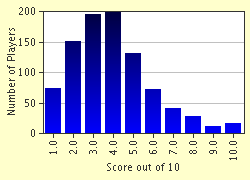Quiz Answer Key and Fun Facts
1. Let's start with the big one, at least in terms of European history. Who was the Emperor of the Romans in the year 1 AD?
2. Now let's move to the biggie over in East Asia! Which Chinese empire was in its latter years at the year 1 AD?
3. In the areas formerly ruled by the great Persian dynasty of the Achaemenids, another new empire had developed to rival the Romans to the west by the year 1 AD. What was the name of this empire?
4. Around the year 1 AD, which tribes were the most prominent at the northern borders of China, continuing a tradition of warfare between the settled, agricultural people in China and the nomadic, horse-mounted people in Mongolia?
5. Several great civilizations were flourishing in Mexico at around the year 1 AD. Which of these civilizations was centered at Monte Alban in the central valley of Oaxaca, in what is now southern Mexico?
6. Which ancient kingdom was developing in the region of modern Peru at around the year 1 AD?
7. People of what ethnic and language background began their journey to populate the previously uninhabited (by humans, of course!) island of Madagascar soon after the year 1 AD?
8. At around the year 1 AD a culture was flourishing along the Ohio River valley in what is now the United States. This culture has been given which title by anthropologists who have excavated a number of their 'mounds'?
9. Which of these areas was temporarily held by Roman troops at approximately the year 1 AD, but was soon after lost in a great Roman defeat of 9 A.D.?
10. Which of these kingdoms was not prominent on the Indian sub-continent around the time of the year 1 AD?
Source: Author
thejazzkickazz
This quiz was reviewed by our editing team before going online.
Any errors found in FunTrivia content are routinely corrected through our feedback system.

